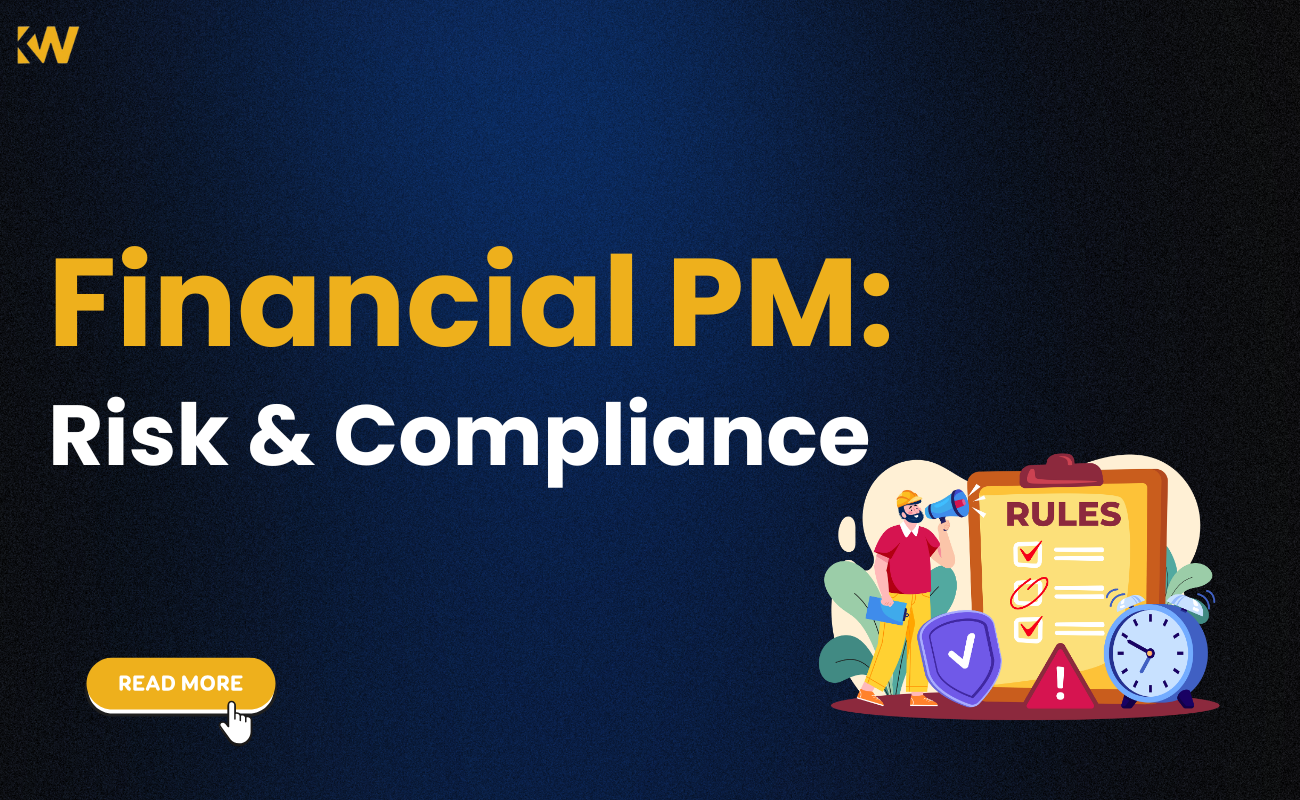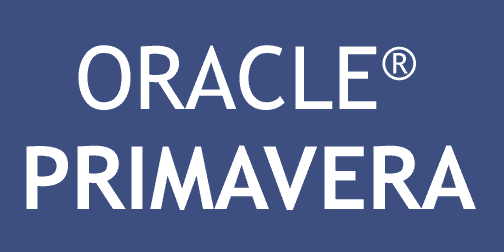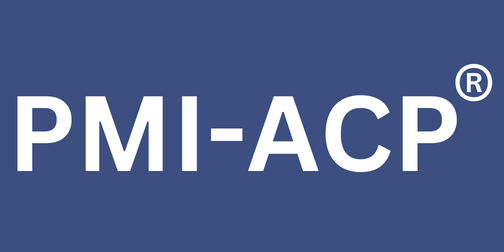
Financial Services Project Management: Risk & Compliance Challenges
Posted On February 11, 2025 - 15:51 PM
Introduction
The financial sector is among the most heavily regulated industries that require strict compliance to the standards of compliance as well as risk management frameworks and ever-changing regulations. Financial services project management requires balancing efficiency, and security in addition to legal conformity while providing creative solutions.
With the increase of digital banking and AI-driven financial products cybersecurity threats and blockchain Project managers in this industry have to navigate complex compliance and risk issues to ensure the success of project execution.
This blog will discuss the most important risk factors involved in the management of financial services projects Significant compliance challenges and regulatory concerns Best practices to reduce risk and ensure compliance importance of AI and technology in financial service projects
1. Understanding Risk in Financial Services Project Management
The risk inherent to any project, however in finance, the stakes are more significant because of:
-
Regulatory penalties for non-compliance
-
Losses in financials due to operational failures
-
Threats to cybersecurity and fraudulent risk
-
Damage to reputation resulting from project failures
Types of Risks in Financial Services Projects
1. Regulatory & Compliance Risks
Financial institutions have to comply with the regulations, which include:
-
Basel III (banking risk management)
-
GDPR & CCPA (data privacy)
-
SOX (Sarbanes-Oxley Act) (financial reporting)
-
PCI DSS (payment security standards)
Failure to follow the rules could result in large penalties, legal action and reputational harm.
2. Cybersecurity & Data Breach Risks
With the increase in digital transactions, banks are now facing cyber threats like hacking, phishing, as well as ransomware attacks. Customer data that is sensitive is required to be secured by implementing secure security protocols.
3. Operational & Technology Risks
-
System problems or outages for banking apps
-
Issues with data migration within fintech initiatives
-
Insufficiently integrated software for financial transactions causes mistakes in transactions
4. Third-Party & Vendor Risks
A lot of financial companies outsource their services through third-party vendors (e.g. cloud computing and payments gateways). The risks include:
-
Non-compliance of vendors
-
Security breaches of data through third-party
-
Dependence on service providers from outside
5. Strategic & Market Risks
Financial service projects need to match the latest trends in the marketplace and with expectations from customers. A lack of strategic planning could cause:
-
Losses as a result of unsuccessful launches of new products
-
Investments in obsolete technology
-
The disadvantages of competition are because of slow development
2. Compliance Challenges in Financial Services Project Management
Making sure that regulatory compliance is met is among the most difficult tasks in controlling financial project management. Here are a few key areas project managers should concentrate on:
1. Data Privacy & Protection Regulations
Regulations such as GDPR (General Data Protection Regulation) and CCPA (California Consumer Privacy Act) require financial organizations to:
Protect customer information from data security breaches
Transparency in the collection of data and its use
Let customers ask for data deletion
Example: A bank launching an online lending platform has to ensure that all information about customers is secured and encrypted and in compliance with the lawful protection of data.
2. Anti-Money Laundering (AML) & Know Your Customer (KYC) Compliance
Financial services should be able to stop money laundering, fraud and illegal transactions with: KYC procedures to verify customer identities. Compliance programs to identify suspicious transactions. Monitoring systems to detect unusual activity
Example: A financial institution that is implementing a digital wallet should incorporate automated KYC authentication tools to be compliant with AML laws.
3. Risk-Based Regulation Frameworks (Basel III, Dodd-Frank, etc. )
Financial and banking projects have to adhere to risk-management frameworks, such as:
-
Basel III (ensuring banks maintain sufficient capital reserves)
-
Dodd-Frank Act (protecting the consumer against financial fraud)
Examples: A project team developing a model for assessing credit risks for loan approvals must adhere to Basel III guidelines to ensure financial stability.
4. Fraud Prevention & Secure Payment Systems
With the rise of digital payment including cryptocurrencies, cryptos and fintech solutions, financial enterprises must prioritize secure Payment gateways (PCI DSS conformity) Fraud detection using AI Tokenization and multi-factor authentication
Example: A fintech startup that is launching a peer-to-peer payment application must make sure that it is PCI DSS conformity for transactions using secure cards.
5. Compliance in Cloud & Digital Transformation Projects
Numerous financial companies are moving towards cloud-based services for greater agility as well as cost reductions. Cloud-based projects are not without challenges:
-
Restrictions on the storage of customer information on foreign servers
-
Security concerns regarding unauthorized data access
Example: A bank moving its customer relationship management (CRM) system to the cloud should be compliant with local laws regarding data storage.
3. Best Practices for Managing Risk & Compliance in Financial Projects
To efficiently control financial project costs Project managers must incorporate the assessment of risk, checks for compliance as well as governance and compliance frameworks into their processes.
1. Implement a Robust Risk Management Framework
Perform risk assessments before starting any financial venture. Identify cybersecurity risks, cybersecurity risks and operational risks. Create an action plan for risk mitigation with clearly defined mitigation plans
Example: Before launching an online banking application Conduct penetration tests to find security flaws.
2. Stay Updated on Regulatory Changes
Affect a compliance officer, or a specialist to supervise the financial regulations. Provide regular training for the project teams on legal regulations. Use compliance management software to monitor any regulatory updates
Example: A global financial company that is implementing the AI-informed trading system must be sure to comply with SEC (Securities and Exchange Commission) guidelines.
3. Strengthen Cybersecurity Measures
Make use of Multi-factor identification (MFA) as well as encryption to safeguard customer information Use real-time fraud detection software that uses AI Conduct regular security audits as well as penetration testing
Example: A credit card company working on an AI-powered security system for detecting fraud should incorporate machine learning models to spot irregular spending patterns.
4. Adopt Agile & Compliance-Integrated Project Management
Utilize Agile methods to rapidly adapt to regulatory changes. Include the compliance checkpoints in every stage of the project. Maintain a comprehensive record for audits of regulatory compliance
Example: A fintech company that is launching the first payment system based on blockchain must conduct checks of compliance at the beginning of every Sprint cycle.
5. Choose the Right Technology & Vendors
Check that third-party vendors comply with the financial regulations. Use blockchain to safe transactions and smart contracts. Use cloud security measures when you use AWS, Azure, or Google Cloud
Example: A bank using third-party AI credit scoring tools must make sure that privacy policies for data have been in place.
4. The Role of AI & Emerging Technologies in Financial Project Management
1. AI-Powered Compliance Monitoring
AI tools can analyse large databases to find non-compliance risks. Chatbots powered by AI can respond to questions from customers about compliance policies. automated AML monitoring tools detect suspicious transactions immediately.
2. Blockchain for Secure & Transparent Transactions
Blockchain increases the security of financial transactions
Smart contracts simplify compliance with regulations in financial contracts
3. Cloud Computing for Scalable Financial Services
Cloud-based platforms provide safe data storage as well as backup in the event of a disaster.
Compliant with the regulations cloud-based solutions become more widespread
Conclusion: The Future of Risk & Compliance in Financial Services Projects
The management of financial services projects through 2025 requires an approach that is proactive in managing risk management as well as regulatory compliance and cybersecurity. Project managers should:
Stay updated with global financial regulations Implement robust cybersecurity frameworks Leverage AI and automation for compliance monitoring Ensure vendor and third-party risk assessments Adopt Agile & compliance-integrated project management
As technology in finance is constantly evolving, project managers who are aware of both regulatory requirements as well as technological advancement will be highly sought after. Are you prepared to tackle the difficulties of managing financial projects in 2025?
Check Out This Blog : The Future of IT Project Management in 2025: Trends and Innovations


















